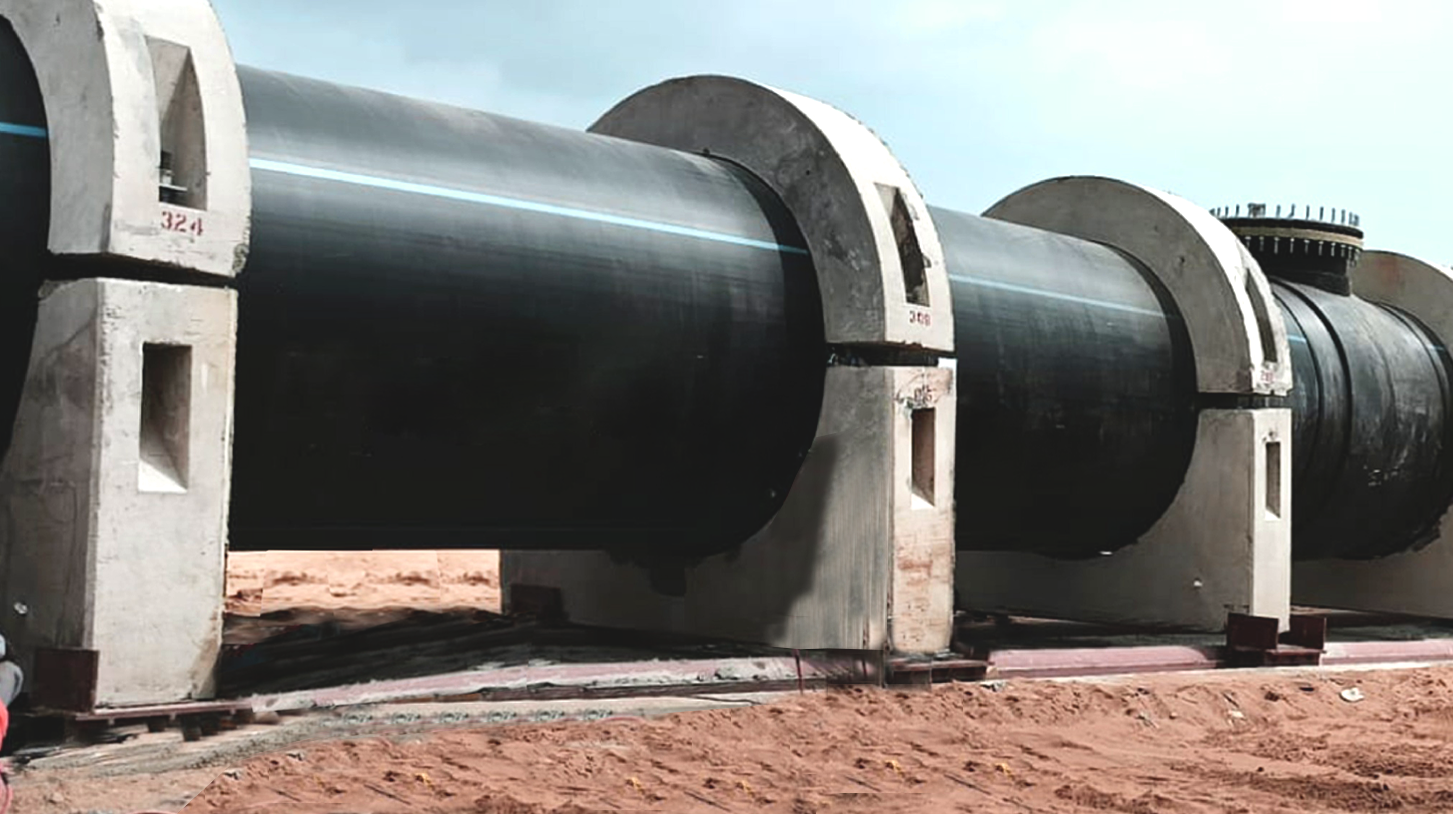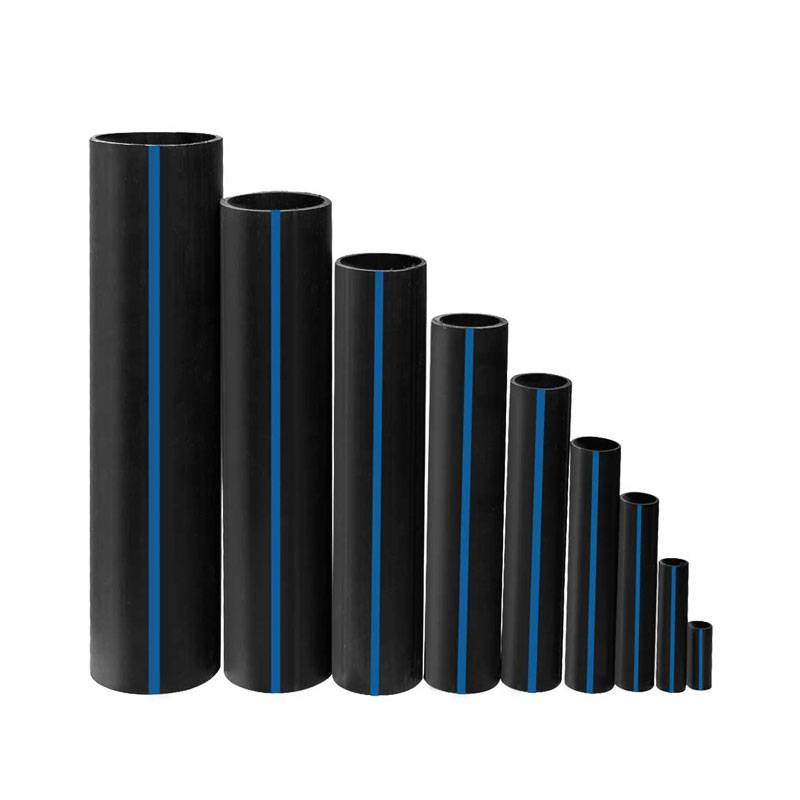The Important Actions for Effective Installation of HDPE Pipe in Your Next Project
Successful setup of HDPE pipe requires careful planning and execution. Key actions include examining project requirements, preparing the website, and picking correct joining methods. Each stage plays an important duty in making certain the integrity and efficiency of the pipe. Recognizing these essential actions can considerably affect the total success of the task - American Plastics HDPE Pipe for Oilfield. The nuances of each step may hold the trick to overcoming typical difficulties faced during installment.
Understanding the Conveniences of HDPE Pipe
High-density polyethylene (HDPE) pipe offers various benefits that make it a preferred choice for numerous applications. Its high resistance to rust and chemicals warranties resilience in demanding atmospheres, considerably prolonging the life expectancy of setups. Additionally, HDPE's versatility enables much easier setup, especially in tough surfaces, as it can flex without breaking. The lightweight nature of HDPE pipeline simplifies transportation and handling, reducing labor prices throughout installation.
Moreover, HDPE pipe is understood for its low friction coefficient, which enhances fluid circulation and decreases energy usage. Its seamless building decreases the risk of leaks, contributing to better resource administration and ecological protection. Furthermore, HDPE is recyclable, aligning with sustainable techniques and decreasing ecological impact. Generally, the combination of stamina, versatility, and eco-friendliness makes HDPE pipe a superior choice for a vast array of projects, from water circulation to industrial applications.
Planning Your HDPE Pipe Setup
When intending an installation of HDPE pipeline, careful factor to consider of a number of crucial elements is vital to protect an effective task. Job supervisors should examine the details needs of the pipe, including the planned usage, circulation rates, and environmental conditions. Comprehending these specifications will certainly lead the option of appropriate pipe measurements and product grade.
Next off, timelines ought to be developed, factoring in purchase schedules and any type of prospective hold-ups. Sychronisation with neighborhood authorities for licenses and regulative conformity is likewise necessary. Additionally, a comprehensive budget plan ought to be prepared, incorporating all expenses connected with products, labor, and machinery.
It is vital to involve a qualified team experienced in HDPE pipeline installation. Their knowledge will aid minimize dangers, assurance adherence to sector requirements, and eventually add to the project's success. Comprehensive planning prepares for a smooth installation process and lasting efficiency of the HDPE piping system.
Preparing the Site for Installment
Appropriate site prep work is important for the successful installment of HDPE pipe. Before setup starts, the site must be completely examined to assure it satisfies all required requirements. This consists of checking the ground for existing structures, energies, and possible dangers that might impede the installation process.

Correct elevation and positioning must be developed to maintain a constant slope for drainage purposes. Correct drain around the installation website is additionally imperative to stop water accumulation, which can cause problems down the line.
Methods for Joining HDPE Pipings
Achieving a reliable connection between HDPE pipes is important for guaranteeing the honesty and durability of the installment. Numerous strategies exist for signing up with these pipes, each fit for different job demands. Combination welding is just one of one of the most common methods, making use of warm to bond the pipe finishes together, producing a seamless and long lasting connection. This technique can be more classified into outlet blend and butt blend, relying on the pipe setups.
Mechanical installations are one more alternative, using clamps and threaded ports to join areas of HDPE pipe. While generally faster to install, they might require added maintenance with time. Electrofusion is a specialized approach that involves utilizing electrical current to warmth and fuse the pipes via specifically designed fittings, ensuring a strong bond. Picking the appropriate joining strategy is important, as it straight impacts the general efficiency and reliability of the HDPE piping system in the designated application.
Testing and Assessment of Installed Pipes
The testing and inspection of set up HDPE pipelines are crucial to ensuring their capability and longevity. This process includes aesthetic inspection methods, stress screening methods, and leak detection procedures to recognize prospective issues. By employing these approaches, specialists can verify the integrity of the setup before it is taken into use.
Visual Evaluation Techniques
Using reliable visual evaluation techniques is crucial for guaranteeing the integrity of mounted HDPE pipes. Examiners ought to systematically take a look at all noticeable areas of the pipe to identify any signs of damage, imbalance, or incorrect installation. Trick signs to evaluate include joint integrity, surface area abnormalities, and links. Examiners might use devices such as multiplying glasses or electronic cameras to enhance visibility and information. It is important to look for indications of ecological anxiety, such as twisting or too much flexing, which could jeopardize performance. Consistent paperwork of findings permits tracking changes gradually and helps overview essential repair services. By sticking to recognized aesthetic examination procedures, task teams can notably reduce the threat of future failures and ensure long-term dependability of the piping system.
Stress Evaluating Approaches
Visual assessment offers as a preliminary procedure, yet it is not sufficient by itself to assure the performance of set up HDPE pipelines. Stress testing techniques are essential for guaranteeing the honesty of these systems. Usually, hydrostatic screening is utilized, where the pipelines are loaded with water and subjected to stress degrees above the designated operating pressure. This approach helps determine weak points or possible leakages. Pneumatic testing can also be used, although it brings better threats as a result of the compressibility of air. No matter the method selected, adhering to market requirements and safety and security protocols is vital. After carrying out stress examinations, extensive documentation is required to verify the results and verify that the installment fulfills all functional needs before proceeding to the next phase of the task.

Leak Detection Procedures
Just how can one assure that mounted HDPE pipelines are devoid of leaks? Effective leak detection procedures are vital to secure the integrity of the system. Visual evaluations must be performed, looking for indications of water buildup or dirt disintegration around pipe joints. Following this, pressure testing can validate the system's stamina. An usual technique is the hydrostatic test, where water is introduced under pressure, checking for declines that indicate possible leakages. Furthermore, progressed innovations, such as acoustic sensing units or infrared thermography, can identify leakages that may not be visible. Routine surveillance and upkeep further add to the durability of HDPE pipes, guaranteeing they remain leak-free throughout their functional life expectancy. Proper documents of these procedures is crucial for compliance and future reference.
Maintenance Tips for Long-Term Performance
To guarantee the longevity of HDPE pipelines, establishing a normal inspection click here timetable is important. This proactive technique permits for the very early detection of potential problems, decreasing costly repair work. Furthermore, applying correct cleaning methods will aid maintain peak efficiency and prevent accumulation that can affect capability.
Regular Inspection Schedule
HDPE pipes are known for their durability and resistance to deterioration, establishing a normal assessment routine is necessary for guaranteeing their lasting efficiency. Regular inspections help identify potential issues such as leaks, joint honesty, and ecological influences that might impact the pipeline's functionality. It is suggested that assessments take place at least biannually, or much more often in settings with severe problems. Texas hdpe pipe manufacturer. Throughout these analyses, aesthetic checks need to be carried out to discover indications of wear or damages. In addition, making use of modern technology such as ultrasonic screening can supply additional understandings right into the pipeline's condition. By applying an organized evaluation routine, project managers can proactively attend to troubles, therefore expanding the life expectancy of HDPE pipelines and preserving system effectiveness
Appropriate Cleansing Techniques
Proper cleansing methods play an important duty in preserving the lasting efficiency of HDPE pipes. Routine cleansing protects against the buildup of particles, debris, and biofilm, which can result in obstructions and lowered flow effectiveness. Operators needs to employ techniques such as high-pressure water jetting or foam cleansing to successfully remove pollutants without harming the pipe surface. It is crucial to prevent making use of rough chemicals that might weaken HDPE product. Furthermore, arranged maintenance checks must include visual inspections for any type of signs of wear or damages. Effectively trained employees must perform these cleansing processes, ensuring compliance with security and ecological regulations. By applying these techniques, the lifespan of HDPE pipes can be greatly prolonged, making certain perfect performance throughout their functional life.
Often Asked Inquiries
What Are the Ecological Effects of HDPE Pipeline Production?
The environmental influences of HDPE pipe manufacturing include greenhouse gas discharges, power consumption during manufacturing, prospective plastic contamination, and obstacles in recycling. HDPE's durability and resistance to rust can minimize some ecological problems.
How Does HDPE Pipe Contrast to Other Materials?

What Tools Are Needed for HDPE Pipeline Installation?
Necessary devices for HDPE pipe setup consist of a combination equipment, pipe cutters, shovels, gauging tape, and security gear. Correct devices assurances reliable, secure handling and installment, contributing to the project's total success and stability.
Exist Any Details Regulations for HDPE Pipeline Installment?
Particular laws for HDPE pipe installation vary by region, usually regulated by neighborhood, state, or government codes. Compliance with these policies guarantees safety, environmental management, and functionality, making adherence vital for effective task end results.
Can HDPE Piping Be Recycled After Usage?
Yes, HDPE pipelines can be reused after usage. Their polycarbonate nature permits reprocessing, making them appropriate for recycling into new products. This sustainability aspect adds to ecological preservation and promotes circular economic climate techniques in construction.